Toon Blast y la muerte de Saga
A principios de este año, Peak Games lanzó un juego llamado "Toon Blast". Algunos desarrolladores le echaron un vistazo, pero la mayoría lo dejó de lado. El juego parecía ser una nueva apariencia directa de Toy Blast, el exitoso juego original de Peak Games.
Pasó el tiempo y Toon Blast finalmente se lanzó a nivel mundial en agosto de 2017. Una vez más, la mayoría de los desarrolladores echaron un vistazo, lo descartaron como una nueva apariencia y luego se marcharon. Pero bajo la superficie, Peak Games estaba probando un cambio clave dentro del juego que es un verdadero signo de los tiempos: eliminaron el Mapa de la Saga:

Dos versiones que Peak Games estuvo probando en agosto. Una versión con el mapa de Saga, otra sin él.
Para quienes crean juegos de combinación, este ha sido un cambio lento pero obvio. Desde que King dominó el género de los juegos de rompecabezas a partir de 2012/2013, los desarrolladores en el espacio han estado tratando activamente de diferenciarse de los jugadores dominantes.
La evolución del género coincidente y Toy Blast
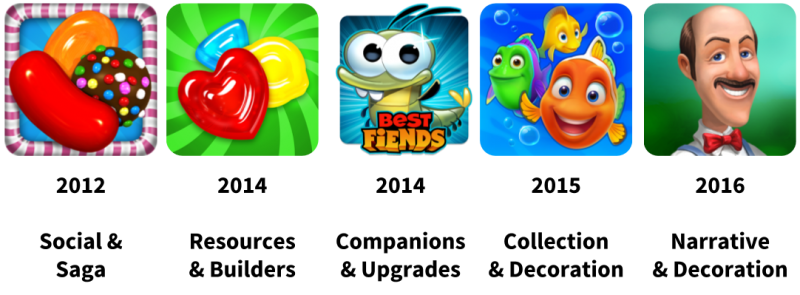
En 2014 llegó Gummy Drop de Big Fish Games, que añadió un toque de gestión de recursos al framework de la saga. Los jugadores recolectaron recursos para eventualmente poder permitirse el lujo de atravesar las puertas. También en 2014, Seriously lanzó Best Fiends, que agregó un sistema de actualización de RPG ligero además de la mecánica principal. En 2015, Playrix lanzó Fishdom, donde los jugadores podían recolectar peces y decorar sus peceras. En 2016 Playrix lanzó Gardenscapes, ya deconstruido aquí , que añadió narrativa y decoración al metajuego de la saga. Los juegos más importantes del género lograron agregar nuevos elementos al metajuego para separarse del modelo habitual basado en Saga.
Pero durante ese tiempo, la mayoría de las empresas de juegos de combinación se apegaron al marco puro de Saga. Algunos vieron un éxito modesto con él, mientras que otros no. Peak Games fue uno de los pocos que tuvo éxito con el marco de Saga. Toy Blast, lanzado en 2015, presentaba un modelo de saga pura, pero con una versión nueva pero familiar de la mecánica principal.

Toy Blast, el gran éxito de Peak Games, fue uno de los últimos juegos en triunfar con un modelo basado puramente en la saga.
La mecánica principal de Toy Blast era similar a la de juegos más antiguos como Collapse, Diamond Dash o Pet Rescue Saga. En lugar de pedir a los jugadores que intercambiaran, los jugadores simplemente tenían que tocar grupos individuales de gemas. Cualquier grupo de 2 o más piezas podría eliminarse instantáneamente, pero cada una cuesta un movimiento. Similar a Candy Crush en términos de estrategia, pero se siente muy diferente. Si bien la interacción en sí es rápida, a medida que avanzas en los niveles más difíciles comienzas a ver que esta mecánica puede ser mucho más dura si no prestas atención y gratificante si planeas algunos movimientos con anticipación.
Still, most developers dismissed Toy Blast initially as “just another Candy Crush clone” — but this is definitely not reflected in the numbers. Looking at net monthly revenue from Sensor Tower, Toy Blast has grown into a massive revenue driver:
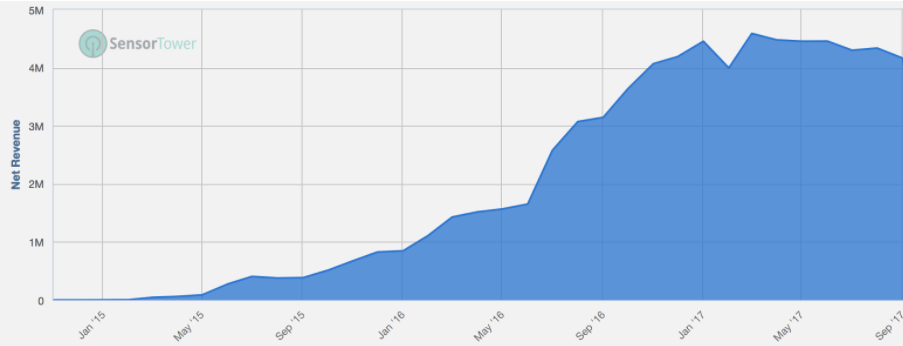
source: Sensor Tower Estimates
Toy Blast grew to be a sticky top grossing puzzle game. But unlike most top grossing games, it was clear that Peak Games had a slow and steady growth to the top. Much to the creditof their team, they managed through methodical improvements and strong performance marketing to build Toy Blast into the success it is today.
After the success of Toy Blast, it was no wonder that Peak Games started work on Toon Blast. It’s an obvious safe bet to repurpose the gameplay they already have. King and Playrix have done the same with their top franchises with clear success. Being able to retain players that lapse from your hit games by cross-promoting them to your new exciting games is powerful.
But why is it that Peak Games, the last developer to have found success with the “pure” saga model, opted for a radically different design in Toon Blast?
Why are top developers are abandoning the pure Saga model?
There are 2 key reasons for this.
Reason 1: Facebook doesn’t matter
The biggest shift that has changed since Candy Crush Saga first came out is that friends within games, especially through facebook connect, have become decreasingly important.
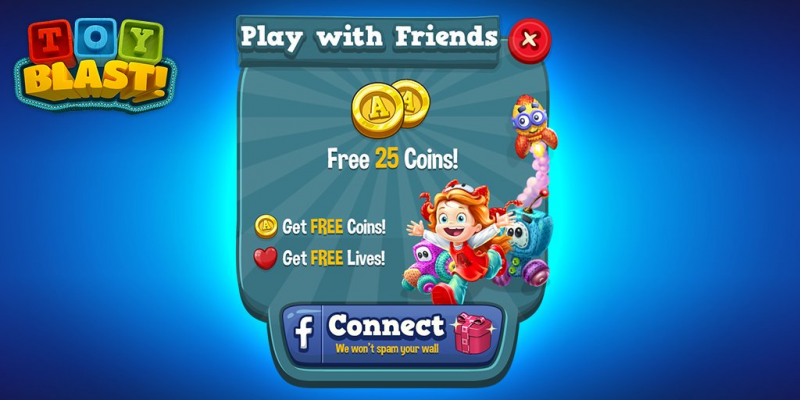
For one, facebook connection has gone steadily down since 2012. Players are less likely to connect their games, even when games offer big rewards for connecting. While socially connected players tend to retain longer (they see their friends progress) — players are less and less likely to opt-in to that kind of peer pressure on mobile. Especially in puzzle environments.

The first factor here is Facebook. Facebook’s strategy dramatically shifted for games after Candy Crush. Instead of allowing games to post spam all over walls and notify other players freely of every small bit of activity, Facebook has scaled down over the last 4 years the impact of facebook connect. They’ve seen the negative impact it has on their user experience, and slowly made changes to avoid games from taking advantage of their platform with spam. Adding to this, they shifted their revenue strategy to ads. Giving free virality to games, cuts into Facebook’s main revenue source. Instead of offering free virality, Facebook has gradually shut down their virality and instead sells the users to publishers through ads.
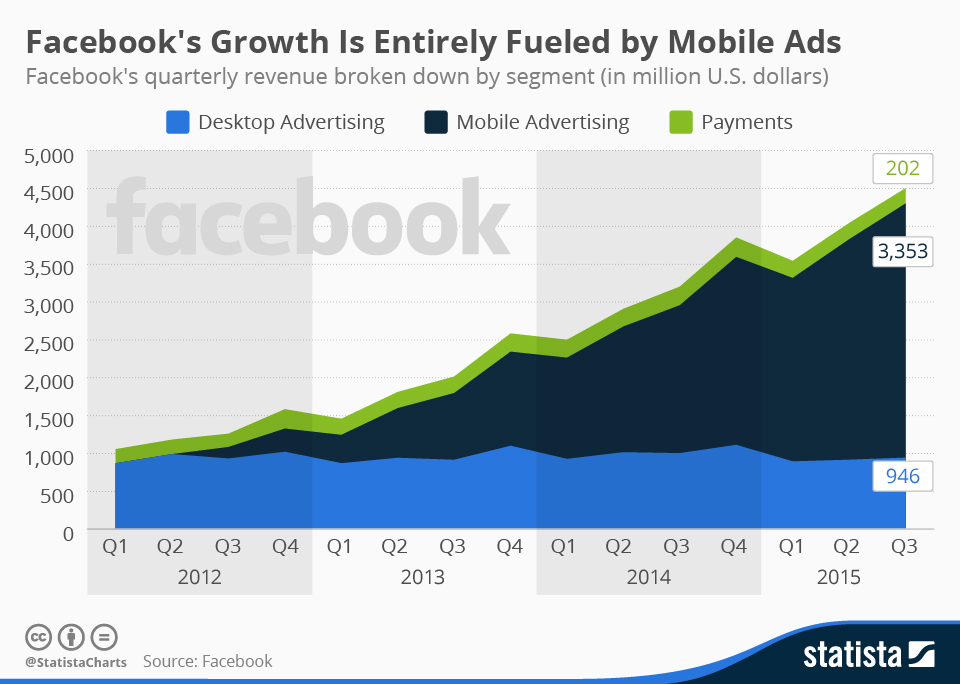
So with connection rates down and much of the importance of Facebook virality gone, puzzle games, which typically depended on this model to be successful, have turned to other sources to drive new users and retain their players.
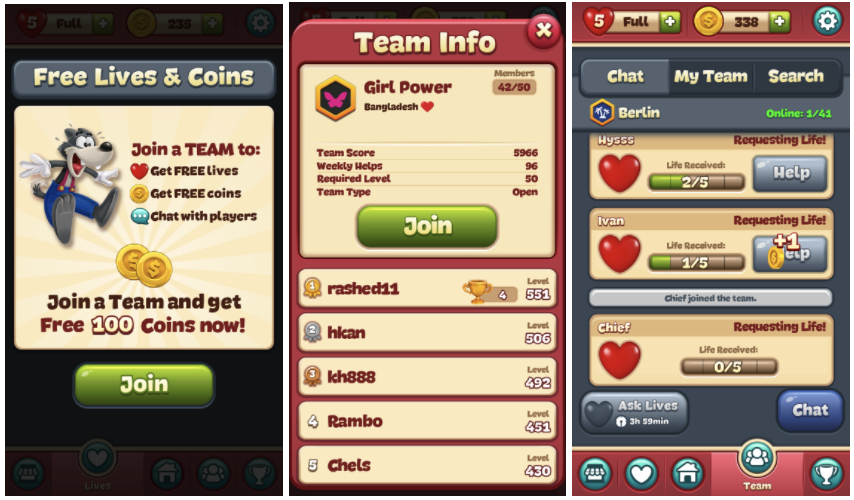
For Toon Blast, this means that instead of only allowing players to play together with their friends, they can now join guilds, which are made up of other active players in the game. Instead of players slowly becoming less engaged as their friends drop off in engagement, players are actively pushed to join together with other active players in the game. With Toon Blast, players send lives and earn coins based on how active their guild is. This is obviously taken out of the playbook of Clash Royale andmost mid-core games on the AppStore. Many games have hadguildfeatures for years, and many have gone deeper with the mechanics. Yet this is a casual matching game — this is a bold choice.
Toon Blast’s addition of clans and guilds is a sign of the times that free facebook virality is gone, and that games can’t rely solely on a player’s group of friends to give reasons to come back and progress in a game.
With facebook gone, developers need to push players to create their own bonds with other players that are active in the game
The standard guild system in Toon Blast accomplishes this.
Reason 2: Events are more Important
The second reason why Saga has been cut from Toon Blast, is Peak Game’s experience with what drives meaningful revenue growth: Events.
If you look back and the timeline of Toy Blast, and what drove the growth of their revenue from 2015 to 2016: it’s a clear focus on engagement events and competitive events.
Looking at how King, Playrix, Wooga and Peak have managed to drive stronger retention in their games, it’s not from adding social features. It has been from adding features to the game that push players to complete more levels, faster. Features like the “Star Chest” in Toon Bast: each star you gain on a level fills up a bar which grows towards a chest. A chest that rewards a player with boosts and coins to help them through tough levels.
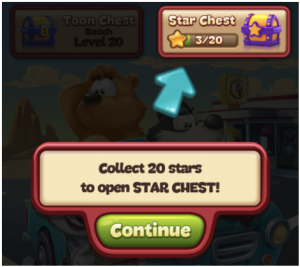
Or features like the “Crown Rush” event in Toy Blast: which demands that players complete certain levels before a time limit counts down.
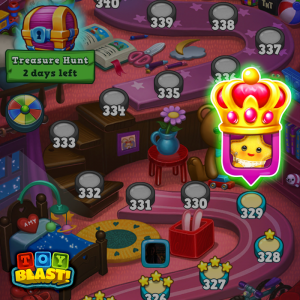
These type of single-player, goal-driven engagement events drive retention and drive monetization in players. Looking at the UI/UX of Toon Blast, now with the Saga map removed, these can now be far more centre stage, and feel far less “tacked on” than the usual Saga Map:
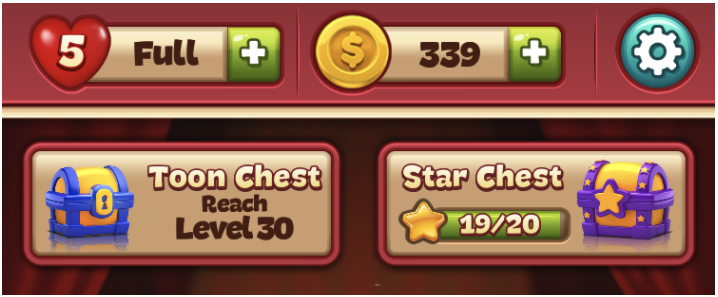 But besides engagement events, Peak Games’ prominent form of revenue growth comes from competitive events within the game. Events which pull players together and ask them to compete against each other for prizes. This is usually just reinforcing the core loop: asking players to progress as fast as they can within a limited time for access to great prizes. Best shown in games like Gardenscapes’ Fireworks Festival:
But besides engagement events, Peak Games’ prominent form of revenue growth comes from competitive events within the game. Events which pull players together and ask them to compete against each other for prizes. This is usually just reinforcing the core loop: asking players to progress as fast as they can within a limited time for access to great prizes. Best shown in games like Gardenscapes’ Fireworks Festival:

Los eventos de participación y competición son los que impulsaron el crecimiento de Toy Blasts , por lo que, por supuesto, Peak Games querría duplicar esa apuesta con Toon Blast. Al alejarse del modelo de mapa de saga simple, ahora tienen un método para hacer que esto sea mucho más parte del núcleo. Imitando los mismos patrones de UX que Clash Royale, para poner los eventos como el foco principal de los jugadores.
En conclusión
La decisión de Peak Game de alejar a Toon Blast de la interfaz de usuario típica de un mapa de Saga fue una elección audaz, pero que claramente es una señal de los tiempos.
- La importancia de Facebook se ha desvanecido hasta el punto de que incluso los desarrolladores de rompecabezas/casuales se apoyan en estructuras tipo gremio para retener a los jugadores.
- Dado que los eventos son el principal generador de ingresos para los juegos de rompecabezas, Toon Blast centra su interfaz de usuario mucho más en los eventos que en el progreso de la saga.
Como ocurre con todo en la vida y en los videojuegos, lo que sube acaba bajando.
Saga fue una de esas tendencias que ha estado vigente durante tanto tiempo que muchos de nosotros nos preguntamos cuándo desaparecería algún día. ¿Qué vendría después? Ahora tenemos nuestra respuesta.
Leave a Reply